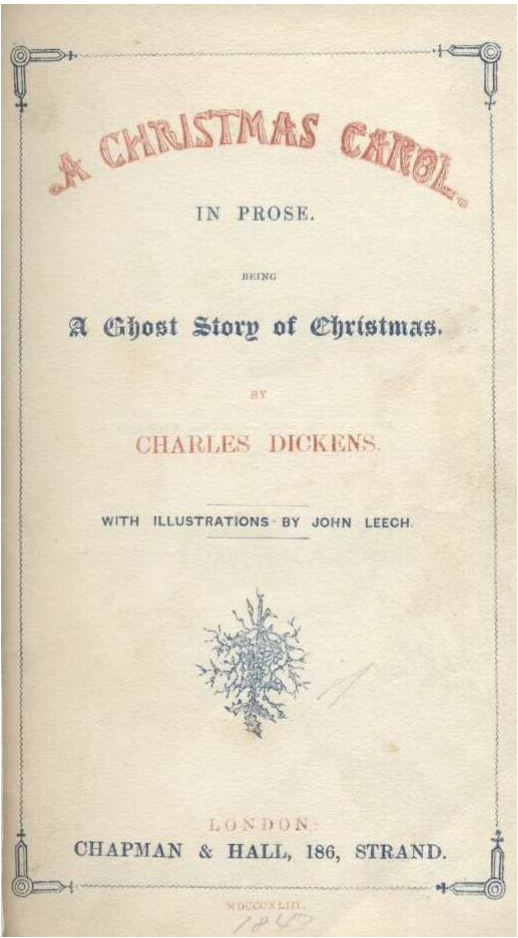by Angelika Zirker
Marley was dead: to begin with. There is no doubt whatever about that. The register of his burial was signed by the clergyman, the clerk, the undertaker, and the chief mourner. Scrooge signed it: and Scrooge’s name was good upon ’Change, for anything he chose to put his hand to. Old Marley was as dead as a door-nail.
Mind! I don’t mean to say that I know, of my own knowledge, what there is particularly dead about a door-nail. I might have been inclined, myself, to regard a coffin-nail as the deadest piece of ironmongery in the trade. But the wisdom of our ancestors is in the simile; and my unhallowed hands shall not disturb it, or the Country’s done for. You will therefore permit me to repeat, emphatically, that Marley was as dead as a door-nail.
Scrooge knew he was dead? Of course he did. How could it be otherwise? Scrooge and he were partners for I don’t know how many years. Scrooge was his sole executor, his sole administrator, his sole assign, his sole residuary legatee, his sole friend, and sole mourner. And even Scrooge was not so dreadfully cut up by the sad event, but that he was an excellent man of business on the very day of the funeral, and solemnised it with an undoubted bargain.
The mention of Marley’s funeral brings me back to the point I started from. There is no doubt that Marley was dead. This must be distinctly understood, or nothing wonderful can come of the story I am going to relate. If we were not perfectly convinced that Hamlet’s Father died before the play began, there would be nothing more remarkable in his taking a stroll at night, in an easterly wind, upon his own ramparts, than there would be in any other middle-aged gentleman rashly turning out after dark in a breezy spot—say Saint Paul’s Churchyard for instance—literally to astonish his son’s weak mind.
“Dead as a door-nail” – this memorable phrase is repeated several times in the opening section of Charles Dickens’s A Christmas Carol, first published 180 years ago, on December 19, 1843. The story was an instant bestseller: the complete first edition of 6,000 prints was sold out by Christmas Day, and by the next year, A Christmas Carol was in its thirteenth edition.
 The well-known story is about the reformation of Ebeneezer Scrooge, an elderly miser who hates Christmas and turns away relatives as much as strangers who are in a holiday spirit. His old business partner Marley – the one who is as dead as a door-nail – appears to him the night before Christmas. He is the first of altogether four ghostly encounters: in the following three staves (this is how Dickens called the “chapters” of his book, alluding to the musical context that is also evoked by the titular “Carol”), he will meet the ghosts of Christmas Past, Christmas Present, and of Christmas Yet to Come. The next day, he is a reformed man, accepts invitations for Christmas parties and is the epitome of charity and generosity.
The well-known story is about the reformation of Ebeneezer Scrooge, an elderly miser who hates Christmas and turns away relatives as much as strangers who are in a holiday spirit. His old business partner Marley – the one who is as dead as a door-nail – appears to him the night before Christmas. He is the first of altogether four ghostly encounters: in the following three staves (this is how Dickens called the “chapters” of his book, alluding to the musical context that is also evoked by the titular “Carol”), he will meet the ghosts of Christmas Past, Christmas Present, and of Christmas Yet to Come. The next day, he is a reformed man, accepts invitations for Christmas parties and is the epitome of charity and generosity.
It is generally assumed that Dickens wrote the story against the background of the ongoing industrialization in Britain. In 1842, a Parliamentary Report was published on “The Employment and Condition of Children in Mines and Manufactories” – which made Dickens and a group of his friends visit the mines to witness the working conditions. But it was actually a year later, in October 1843, when Dickens visited Manchester to give a speech to the Athenaeum Club in the Free Trade Hall, that the idea for A Christmas Carol came to him, and the allegorical child figures of Ignorance and Want that make their appearance in Stave Three, “The Second of the Three Spirits,” Christmas Present, are read as directly influenced by his commitment to make working conditions for children more bearable.
A Christmas Carol is still highly popular today – be it in its written form or one of the many adaptations for the theatre and beyond. It reminds us, in these eventful and stressful times, of what Dickens called his “carol philosophy”: “cheerful views, sharp anatomization of humbug, jolly good temper; papers always in season, pat to the time of year; and a vein of glowing, hearty, generous, mirthful, beaming reference in everything to Home, and Fireside.” It is in this vein that we wish to remember Dickens’s story and chime in with Scrooge and wish you all “A merry Christmas!”
Works Cited
Callow, Simon. Dickens’ Christmas: A Victorian Celebration. London: Frances Lincoln, 2003.